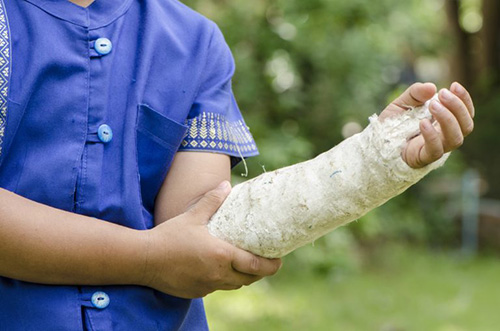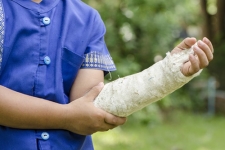Growth Plate Fractures
The seriousness of growth plate fractures lies, in large part, to the fact that if a growth plate fracture is not treated properly – and promptly – the affected limb could grow crooked or to an unequal length as its opposing side. Fortunately, though, serious complications are relatively rare and, with proper treatment, the majority of growth plate fractures heal without complication.

Growth plates are found in the “long bones” (bones that are longer than they are wide) of the body, including the femur (thigh bone), radius and ulna (the bones of the forearm), and the bones in the hands…just to name a few. Most long bones have at least two growth plates, including one at each end of the bone. Contrary to what many believe, bone growth occurs at the end of each bone (as opposed to the center of the bone) around the growth plate – as stated previously, once the individual in question is finished growing, the growth plates harden into bone.
Growth plate fractures can be divided into several categories, depending on their severity. For instance:
- Type I fractures are ones that break at the growth plate, separating the bone end from the bone shaft, completely disrupting the growth plate itself.
- Type II fractures break through part of the bone at the growth plate and crack through the bone shaft, as well. This is the most common type of growth plate fracture.
- Type III fractures cross through a portion of the growth plate and break off a piece of the bone end as well. This type of fracture is more common in older children.
- Type IV fractures break through the bone shaft, the growth plate, and the end of the bone.
- Type V fractures are ones that occur due to a crushing injury to the growth plate from a compression force. Fortunately, these types of growth plate fractures are relatively rare.
So, what causes a growth plate fracture? Well, it can be caused by a single event, such as a fall or car accident, or occur much more gradually as a result of repetitive stress on the bone – this is often seen when a child overtrains in a sports activity.
All children who are still growing are at risk for growth plate injuries, but there are certain factors that may make them more likely to occur:
- Growth plate fractures occur twice as often in boys as in girls, because girls finish growing earlier than boys.
- One-third of all growth plate fractures occur during participation in competitive sports such as football, basketball, or gymnastics.
- About 20% of all growth plate fractures occur during participation in recreational activities such as biking, sledding, skiing, or skateboarding.
- The incidence of growth plate fractures peaks in adolescence.
If your child has sustained a growth plate injury, it’s important that you seek treatment from an orthopaedic surgeon so that the injury can be addressed properly. Here at Prairie Orthopaedic and Plastic Surgery we are well versed in the treatment of growth plate fractures and would be more than happy to see and evaluate your young one – all you need to do is give us a call to set up an appointment!

